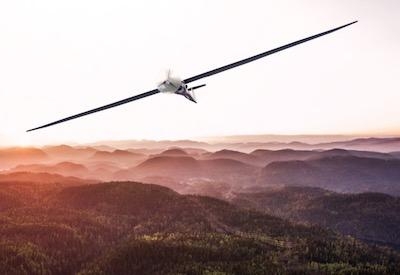Ultra Long Endurance Unmanned Air Platform Demonstration Took Place Earlier This Month
The Air Force Research Laboratory’s Center for Rapid Innovation (CRI) has successfully completed initial flight tests for a revolutionary Unmanned Aerial System (UAS) with a customizable suite of Intelligence, Surveillance and Reconnaissance (ISR) tools that supports extended missions.

This series of flight tests began in Feb. 2019 at Dugway Proving Ground, Utah, culminating with a two and a half-day continuous flight demonstration from Dec. 9 to Dec 11. Subsequent flight tests will demonstrate increased levels of flight endurance.
The Ultra Long Endurance Aircraft Platform (Ultra LEAP) consists of a high-performance, cost-effective, sport-class commercial airframe converted to a fully automated system with autonomous takeoff and landing capabilities. Ultra LEAP also features secure, easy to use navigation employing anti-jam GPS and full global operational access via a satellite-based command and control and high-rate ISR data relay link.
“As the Air Force balances current readiness with long-term modernization, Ultra LEAP represents an affordable approach that supports both existing and future force needs,” said Maj. Gen. William Cooley, AFRL commander, adding that the “enhanced UAS capabilities along with the cost savings offers the military a winning solution.”
“Developing a UAS with this level of endurance is an incredible achievement for future warfighting and battlefield success,” said Paul Litke, the AFRL project engineer leading this effort. Litke explains that since the system employs many commercial off-the-shelf components, Ultra LEAP will dramatically shift the ISR cost-performance curve for the U.S. military.
Developing Ultra LEAP from concept to first flight took less than 10 months, and the system could be ready for operational fielding as soon as 2020. The high level of automation it provides will enable greatly reduced operator training requirements for the U.S. Air Force. Smaller support crews will also lead to lower operating costs.
“Accomplished after only 10 months of development by our AFRL/industry team, today’s 2.5-day Ultra LEAP mission is a significant milestone in solving the tyranny of distance problem for ISR systems,” said Dr. Alok Das, AFRL Senior Scientist and the CRI Director. “It will provide immediate benefit to our warfighters while at the same time paving the path for future low-cost, multi-day endurance ISR systems.”
Ultra LEAP employs many of the subsystems and lessons learned from AFRL’s highly successful prior LEAP program, a UAS that supports missions up to 40 hours. To date, LEAP has completed more than 18,000 combat flight hours and demonstrated one of the lowest mishap rates and smallest mission crew size of any operational UAS in its class. CRI employed the same strategy in both efforts of converting existing aircraft into ISR platforms.
Litke explains that by leveraging the commercial aircraft market, AFRL significantly reduced the cost to manufacture and provide logistical spares relative to UAS.
“This way, the U.S. military will save money without sacrificing reliability and maintainability,” he said.
Going forward, parallel AFRL-CRI efforts will focus on UAS operations with short takeoff and landing distances to support deployments at non-traditional locations.
As an early adopter of creating disruptive innovation through paradigm shifts, AFRL established the CRI in 2006 to streamline AFRL’s application of new and existing technologies to address dynamic changes in air, space, ground, and cyber battlespaces and solve evolving and urgent operational challenges. The execution of this unique process utilizes highly diverse subject matter expertise and a collaborative Government-Industry technical and management capability to nimbly and rapidly develop, test, and deploy innovative prototype solutions for dynamic operational environments.
CRI routinely uses the Small Business Innovation Research program to identify both disruptive technology and innovative engineering talent for its projects. Working with teams of innovative small businesses, CRI has demonstrated numerous operational successes in such areas as back-packable precision strike platforms, counter-improvised explosive devices, counter drone capabilities and secure on-the-move communications. Several efforts have transitioned to Programs of Record.
(Image provided with USAF news release)
 Unfortunate... ANN/SportPlane Resource Guide Adds To Cautionary Advisories
Unfortunate... ANN/SportPlane Resource Guide Adds To Cautionary Advisories ANN FAQ: Turn On Post Notifications
ANN FAQ: Turn On Post Notifications ANN's Daily Aero-Term (04.29.24): Visual Approach Slope Indicator (VASI)
ANN's Daily Aero-Term (04.29.24): Visual Approach Slope Indicator (VASI) ANN's Daily Aero-Term (04.28.24): Airport Marking Aids
ANN's Daily Aero-Term (04.28.24): Airport Marking Aids ANN's Daily Aero-Linx (04.28.24)
ANN's Daily Aero-Linx (04.28.24)



